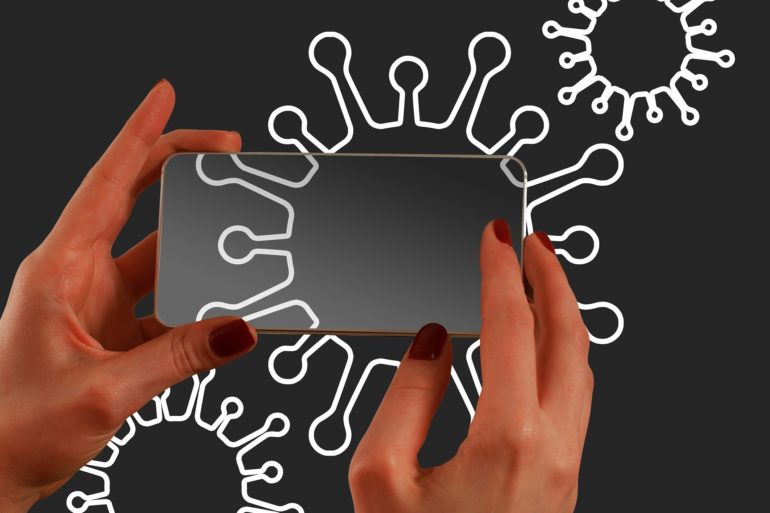The emergence of the delta variant and continued vaccine hesitancy have caused many health and government officials to revisit the need for non-pharmaceutical interventions (NPIs) like social distancing policies, mask wearing, contact tracing and isolating infected individuals to manage new COVID-19 surges.
The one thing everyone wants to avoid is another lockdown, but what intervention measures work best without the need for strict social distancing? New research from the University of Georgia suggests that officials should prioritize contact tracing and quarantine.
“When social distancing in the general population is hard to achieve, we could still rely on contact tracing and case isolation if we do a good job,” said lead author Yang Ge, a doctoral student in the department of epidemiology & biostatistics in UGA’s College of Public Health.
The study, which was recently published in Epidemics, modeled the impact of three interventions—social distancing, contact tracing and case isolation—on containing COVID-19 using both real patient data from China’s Zhejiang province and computer simulations.
The database included over 1,200 symptomatic cases reported between Jan. 7 and Feb. 22, 2020, and the model accounted for their daily contact activities with other people before, during and after the epidemic. As a result, the researchers were able to evaluate the contribution of each intervention, rather than only the combined effect of all three strategies.
They found that the outbreak in Zhejiang was suppressed by isolating cases within five days with 36.5% of infected contacts quarantining. This scenario was only achieved when robust contact tracing was in place.
“Social distancing, case isolation and contact tracing are all critical in suppressing the epidemic, and they interact with each other in the sense that if you fail in one area, the other efforts need to be strengthened. In particular, we noticed that contact tracing is very important despite not being part of the major conversation in current control efforts,” said lead co-author Ye Shen, an associate professor of epidemiology & biostatistics at UGA.
In addition to testing the impact of each intervention, they also modeled scenarios where certain interventions were weaker than others, for example, if it took more or less time to isolate a positive case.
“We found that even with a low prevalence level, a gradual reopening is challenging without further strengthening NPIs,” Shen said. Specifically, the curve was steeper when contact tracing was less efficient.
These findings take on new meaning as areas of the U.S. and elsewhere are seeing major case spikes, while many lower income countries are still waiting on vaccines to arrive and continue to rely on these interventions to keep their citizens safe.
“Slow tracing and delayed isolation could easily increase the outbreak size by tens of folds. We should allocate sufficient resources to support such efforts, for example, funding contact tracing forces, allowing people to work or study from home when exposed to COVID-19 cases, and at the minimum, encourage everyone to wear a face mask indoors,” they said.
Model shows potential contact tracing impact against COVID-19
More information:
Yang Ge et al, The impact of social distancing, contact tracing, and case isolation interventions to suppress the COVID-19 epidemic: A modeling study, Epidemics (2021). DOI: 10.1016/j.epidem.2021.100483
Provided by
University of Georgia
Citation:
Contact tracing is key to suppressing COVID-19 (2021, August 17)
retrieved 17 August 2021
from https://medicalxpress.com/news/2021-08-contact-key-suppressing-covid-.html
This document is subject to copyright. Apart from any fair dealing for the purpose of private study or research, no
part may be reproduced without the written permission. The content is provided for information purposes only.



